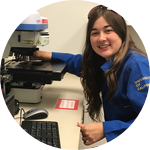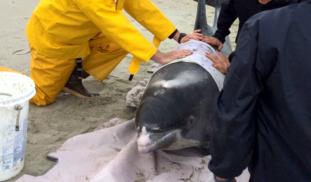Please wait...
About This Project
Marine mammals, like dolphins, eat food contaminated by microplastic pollution, which could cause serious health effects. This project will evaluate samples from marine mammals stranded on beaches to determine whether microplastics or additives are present in their tissues. We will evaluate which species are exposed to plastic pollution and where it is found in the body. This project is a critical step for understanding risks of microplastics to marine mammals.

Browse Other Projects on Experiment
Related Projects
Do Australian bats have what it takes to survive the deadly White Nose Syndrome?
Australian bats are at risk from the deadly fungal disease White Nose Syndrome (WNS), which is expected...
Are climate change and air pollution triggering cardiovascular disease?
Ongoing global climate change and air pollution emissions pose a major threat to cardiovascular health...
Can blood lactate levels help guide treatment for birds suffering from monofilament line entanglement injuries?
Fishing line entanglement injuries are a common problem affecting over 200 different wildlife species globally...





